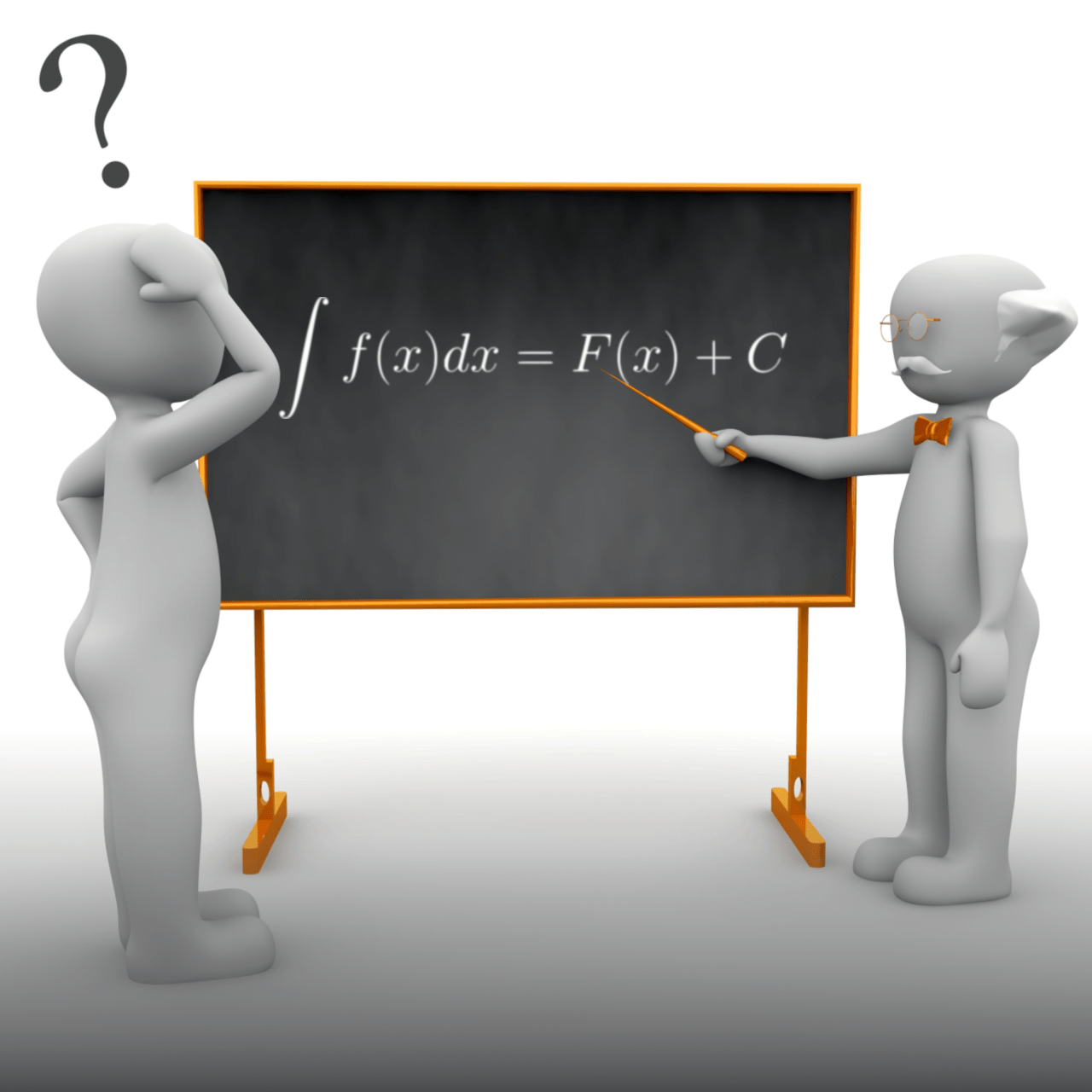The Copernican Revolution of Infiniteness
When infinitesimal calculus was first established, the limit of a function was defined in terms of infinitesimal or infinity. As the naïve way at that time contradicted itself, new methods such as the epsilon-delta definition and non-standard analysis were devised to avoid the contradiction. Although mathematicians are not aware of it, it is Kant’s transcendental idealism that lays the foundation for these methods. That is to say, these methods succeed in solving the paradox of infiniteness because they abandon the cognition of “infiniteness in itself" and accomplish the Copernican Revolution that converts the cognition of infiniteness into the infiniteness of cognition.

Contents
1. The problem of infinitesimal to define a limit
What is infiniteness? It has been an important philosophical problem since Zeno of Elea pointed out its paradoxical nature, which claimed attention again, when Isaac Newton and Gottfried Wilhelm von Leibniz established calculus in the 17th century. They, however, treated infinitesimal and infinity in a naïve way, when they defined the limit of a function.
Let us recognize what is the matter with the naïve way at that time by a simple example of defining the derivative of the squaring function, f(x)=x2. The derivative is the value of the following difference quotient and was defined as follows.
We can now factor out the h to obtain
Now we can let h go to zero to obtain the derivative, 2x. So,
Although this sort of definition is still adopted for beginners, it is inconsistent because it first supposes h not to be zero to factor out and then supposes h to be zero to define the limit. Infinity causes the same problem, since 1/h approaches zero as |h| approaches infinity. In this article I use infiniteness or the infinite in a wider sense that includes both infinity and infinitesimal.
Newton published Philosophiae Naturalis Principia Mathematica in 1687 . Then George Berkeley criticized the contradiction of supposing infinitesimal to be zero and non-zero in 1734[1] . To avoid this criticism the epsilon-delta definition of limit was devised.
2. The epsilon-delta definition of limit
The epsilon-delta (ε-δ) definition of limit was developed by Augustin-Louis Cauchy[2], Bernard Bolzano[3] and accomplished by Karl Weierstraß[4] in 1861. This method is usually thought to define the limit of a function without infinitesimal.
Let us prove the previous example in terms of the epsilon-delta definition.
For each real ε there exists a real δ such that
For all h we have
That is to say
So we can say by means of the epsilon-delta definition
This method does not use such phrases as “approach zero infinitely" or “come as close as desired to zero" and seems to succeed in eliminating infinitesimal. It is true that ε itself is not infinitesimal, but it is universally quantified with the sign of ∀. Therefore the epsilon-delta definition does not eliminate infinitesimal but just transforms the infiniteness of ε approaching zero into the infiniteness of substituting ever smaller value for ε.
The significance of the epsilon-delta definition consists in distinguishing the finite and the infinite of limit and transferring the latter from the attribute of the recognized object to that of the recognizing subject, although developers of the epsilon-delta definition themselves were not aware of it. This transference reminds us of the Copernican Revolution that Immanuel Kant brought about in The Critique of Pure Reason. The Copernican Revolution is achieved originally by “looking for the observed movements not in the heavenly bodies, but in the spectator [5]" and in metaphysics by looking for the infinite not in the recognized object, but in the recognizing subject.
Now, if it appears that when, on the one hand, we assume that our cognition conforms to its objects as things in themselves, the unconditioned cannot be thought without contradiction, and that when, on the other hand, we assume that our representation of things as they are given to us, does not conform to these things as they are in themselves, but that these objects, as phenomena, conform to our mode of representation, the contradiction disappears: we shall then be convinced of the truth of that which we began by assuming for the sake of experiment; we may look upon it as established that the unconditioned does not lie in things as we know them, or as they are given to us, but in things as they are in themselves, beyond the range of our cognition.[6]
As is indicated at the latter half of this quotation, Kant supposed things in themselves to be infinite (unconditioned). Now that we know nothing about things in themselves, as Kant claimed, we should not suppose them to be infinite or unconditioned. What I would like to support is the former half of the quotation, that is to say, we should assume that our cognition of the infinite does not conform to our objects as things in themselves, but conform to our mode of representation.
The question whether everything in the world consists of simple elements or not is the second antinomy of cosmological ideas in The Critique of Pure Reason. According to Kant, the principle of infinite division of space is not that of constituting the recognized object but that of regulating the recognizing subject. So, Kant regarded the antinomy of infinite division as the illusion produced by mistaking the constitutive principle for the regulative[7].
Bolzano, one of developers of the epsilon-delta definition, would have opposed to this Kantian interpretation, because he was an objectivist whose theory of science (Wissenschaftslehre) believed in proposition in itself (Satz an sich). He wrote Paradoxes of the Infinite and put questions whether a half line plus a segment line is longer than a half line or whether a line is longer than a half line by infinite length, although they are all infinite[8]. It was because he did not conduct or notice the Copernican Revolution of the infinite that he felt these paradoxical.
Infinity is a number that is bigger than any number. The Copernican Revolution turns this objective definition to a subjective one: infinity is a number that is too big for a subject to measure. The subject definition makes Bolzano’s paradox less paradoxical: a half line, a half line plus a segment line and a line are all too long for a subject to measure and therefore we cannot say which is longer than which.
The developers and introducers of the epsilon-delta definition believed that they could eliminate infinity or infinitesimal from limits of functions just because they presupposed that the truth can be attributed to the object independent of the subject. You can make infinity or infinitesimal invisible by transferring them from the object to the subject but they are not eliminated. The epsilon-delta definition was right in respect of separating the infinite from the finite but now that infinity and infinitesimal did not disappear we should make them visible again. This is why non-standard analysis came to the fore in 1960s.
3. Non-standard analysis of limit
Non-standard analysis has received much attention as a new strict approach to infinity or infinitesimal since Abraham Robinsonin published his idea in 1966[9]. You can also confer with Howard Jerome Keisler’s easy-to-understand textbook based on non-standard analysis, Elementary Calculus.
Non-standard analysis extends real number to hyperreal number to include infinity and infinitesimal. Positive and negative infinities are infinite hyperreal numbers, while the other hyperreal numbers that are between real numbers are finite hyperreal numbers. Infinitestimals are finite hyperreal numbers but not real numbers except zero.
The relation between a real number and a hyperreal number is similar to that between a real number and a complex number.
Just as a complex number consists of the real part and the imaginary part, a hyperreal number consists of the standard part and the nonstandard part, namely the real part and the non-real part. Infinity has no standard part. The standard part of a real number plus infinitesimal is equal to the real number. A limit is defined as the standard part of a difference quotient.
Non-standard analysis defines the derivative of f(x)=x2 as follows.
Let h be infinitely close to but not equal to 0,
then we have
Taking standard parts, the derivative of the squaring function is
Non-standard analysis seems more similar to the classical method of Newton and Leibniz than the epsilon-delta definition, but it is not identical to the former in that it distinguishes real numbers from non-real hyperreal numbers. The relation between them is, however, not clear. There is no space between zero and the least real number where the infinitesimal number is plotted and there is no fixed position next to the largest real number where the positive infinity is assigned. The continuity of real numbers admits no space in a real number line for non-real hyperreal numbers. The non-real hyperreal numbers are not the objective numbers located anywhere on a real number line but subjective numbers above them. The “hyper" of the hyperreal number can mean “above object" namely “subjective".
4. The paradox of Achilles and the tortoise
The paradoxes of infinity were known before infinitesimal calculus was invented and the most famous is the paradox of Achilles and the tortoise devised by Parmenides or his disciple, Zeno of Elea. Let’s see how the Copernican Revolution of infinitesimal can resolve its aporia.

In the paradox of Achilles and the Tortoise, Achilles is in a footrace with the tortoise. Suppose Achilles allows the tortoise a head start of d metres. Suppose further the velocity of Achilles is va m/s and that of tortoise is vt m/s, which is lower than va m/s. It takes d/va s for Achilles to get to the tortoise’s starting point, while the tortoise has run vt* d/va meter distance. It will then take some further time for Achilles to run that distance, by which time the tortoise will have advanced farther and so on. Zeno claimed that because this catch up process should be repeated infinitely, Achilles could never overtake the tortoise.
Achilles actually has only to run a finite distance D to overtake the tortoise.
Because we suppose 0 < vt< vt,
Therefore this infinite geometric series converges.
Now that the distance is finite, the time to overtake the tortoise is finte.
So where did Zeno make a mistake? Aristotle said as follows.
Hence Zeno’s argument makes a false assumption in asserting that it is impossible for a thing to pass over or severally to come in contact with infinite things in a finite time. For there are two senses in which length and time and generally anything continuous are called 'infinite’: they are called so either in respect of divisibility or in respect of their extremities. So while a thing in a finite time cannot come in contact with things quantitatively infinite, it can come in contact with things infinite in respect of divisibility: for in this sense the time itself is also infinite.[11]
Would it have persuaded Zeno that he was wrong? He might have retorted that Achilles could never overtake the tortoise if time itself could be divided infinitely. To avoid such a misunderstanding we must distinguish the divided time and the time for division. If each division takes a certain length of time, infinite division will require infinite time. But it is the time for dividing subject and the divided time and the divided distance corresponding to it has a finite length. Thus the Copernican Revolution of attributing the objective infiniteness to the infinite activity of the subject can refute the quibble of Zeno.
5. Is there an object corresponding to the infinite?
For the ancient Greek philosophers what is infinity or infinitesimal was the matter of physics. The physical questions whether we can divide matter into atoms, hadrons, elementary particles and so on infinitely or not, whether the universe has infinite size or not should be answered on empirical ground. Mathematical questions are different in that they can be answered theoretically[12].
The ideal object of mathematics is different from the real object of positive science. For example, a mathematically complete circle is not found in the real world. Infinity and infinitesimal are not the attributes of real objects or even ideal objects but the attributes of subjective activity on ideal objects. This is the conclusion of this article.
As our cognition is finite, we don’t know whether what we call infinity or infinitesimal has its counterpart in ideal or real objects. It is, however, because we don’t know it that we can have such concepts as infinity and infinitesimal. That is to say, we can recognize the infinite because our cognition is finite. In other words, God, who we imagine has infinite power, could not recognize the infinite.
6. References
- ↑George Berkeley. The Analyst: a Discourse addressed to an Infidel Mathematician. §. 15.
- ↑Augustin-Louis Cauchy. “Résumé des leçons données à l’École royale polytechnique sur le calcul infinitésimal." in Oeuvres complètes d’Augustin Cauchy, Série 2, tome 4. Reprinted: Forgotten Books (February 19, 2018). p. 47.
- ↑Bernard Bolzano. Rein analytischer Beweis des Lehrsatzes, daß zwischen je zwei Werten, die ein entgegengesetztes Resultat gewähren, wenigstens eine reelle Wurzel der Gleichung liege. Reprinted: University of California Libraries (January 1, 1905).
- ↑Karl Weierstraß. “Differentialrechnung – Ausarbeitung der Vorlesung an dem Königlichen Gewerbeinstitut zu Berlin im Sommersemester 1861 von H. A. Schwarz."
- ↑“die beobachteten Bewegungen nicht in den Gegenständen des Himmels, sondern in ihrem Zuschauer zu suchen" Immanuel Kant. Kritik der reinen Vernunft. Felix Meiner Verlag (July 1, 1998). p. 14-15.
- ↑“Findet sich nun, wenn man annimmt, unsere Erfahrungserkenntniß richte sich nach den Gegenständen als Dingen an sich selbst, daß das Unbedingte ohne Widerspruch gar nicht gedacht werden könne; dagegen, wenn man annimmt, unsere Vorstellung der Dinge, wie sie uns gegeben werden, richte sich nicht nach diesen als Dingen an sich selbst, sondern diese Gegenstände vielmehr als Erscheinungen richten sich nach unserer Vorstellungsart, der Widerspruch wegfalle; und daß folglich das Unbedingte nicht an Dingen, so fern wir sie kennen (sie uns gegeben werden), wohl aber an ihnen, so fern wir sie nicht kennen, als Sachen an sich selbst angetroffen werden müsse: so zeigt sich, daß, was wir anfangs nur zum Versuche annahmen, gegründet sei." Immanuel Kant. Kritik der reinen Vernunft. Felix Meiner Verlag (July 1, 1998). p. 14.
- ↑Immanuel Kant. Kritik der reinen Vernunft. Felix Meiner Verlag (July 1, 1998). p. 460.
- ↑Bernard Bolzano. Paradoxien Des Unendlichen. Reprinted: Felix Meiner Verlag; 1., edition (February 1, 2012). §. 19.
- ↑Abraham Robinson. Non-standard Analysis. Reprinted: Princeton University Press; Revised, Subsequent edition (January 8, 1996).
- ↑Martin Grandjean. “Zeno’s paradoxes are a set of philosophical problems generally thought to have been devised by Greek philosopher Zeno of Elea (ca. 490–430 BC) to support Parmenides’s doctrine that contrary to the evidence of one’s senses, the belief in plurality and change is mistaken, and in particular that motion is nothing but an illusion.." Licensed under CC-BY-SA.
- ↑“διὸ καὶ ὁ Ζήνωνος λόγος ψεῦδος λαμβάνει τὸ μὴ ἐνδέχεσθαι τὰ ἄπειρα διελθεῖν ἢ ἅψασθαι τῶν ἀπείρων καθ’ ἕκαστον ἐν πεπερασμένῳ χρόνῳ. διχῶς γὰρ λέγεται καὶ τὸ μῆκος καὶ ὁ χρόνος ἄπειρον, καὶ ὅλως πᾶν τὸ συνεχές, ἤτοι κατὰ διαίρεσιν ἢ τοῖς ἐσχάτοις. τῶν μὲν οὖν κατὰ τὸ ποσὸν ἀπείρων οὐκ ἐνδέχεται ἅψασθαι ἐν πεπερασμένῳ χρόνῳ, τῶν δὲ κατὰ διαίρεσιν ἐνδέχεται. καὶ γὰρ αὐτὸς ὁ χρόνος οὕτως ἄπειρος." Aristotle. Physics (ΑΡΙΣΤΟΤΗΛΟΥΣ ΦΥΣΙΚΗΣ ΑΚΡΟΑΣΕΩΣ). Book 6.
- ↑According to the generalized uncertainty principle, the Planck length (1.616199×10−35 metres) is the shortest measurable unit of length and the Planck time (5.39106 ×10−44 s) is the shortest measurable unit of time. The string theory insists shorter units of space-time do not make physical sense. The question whether the universe is limited or unlimited still remains in dispute.








Discussion
New Comments
No comments yet. Be the first one!